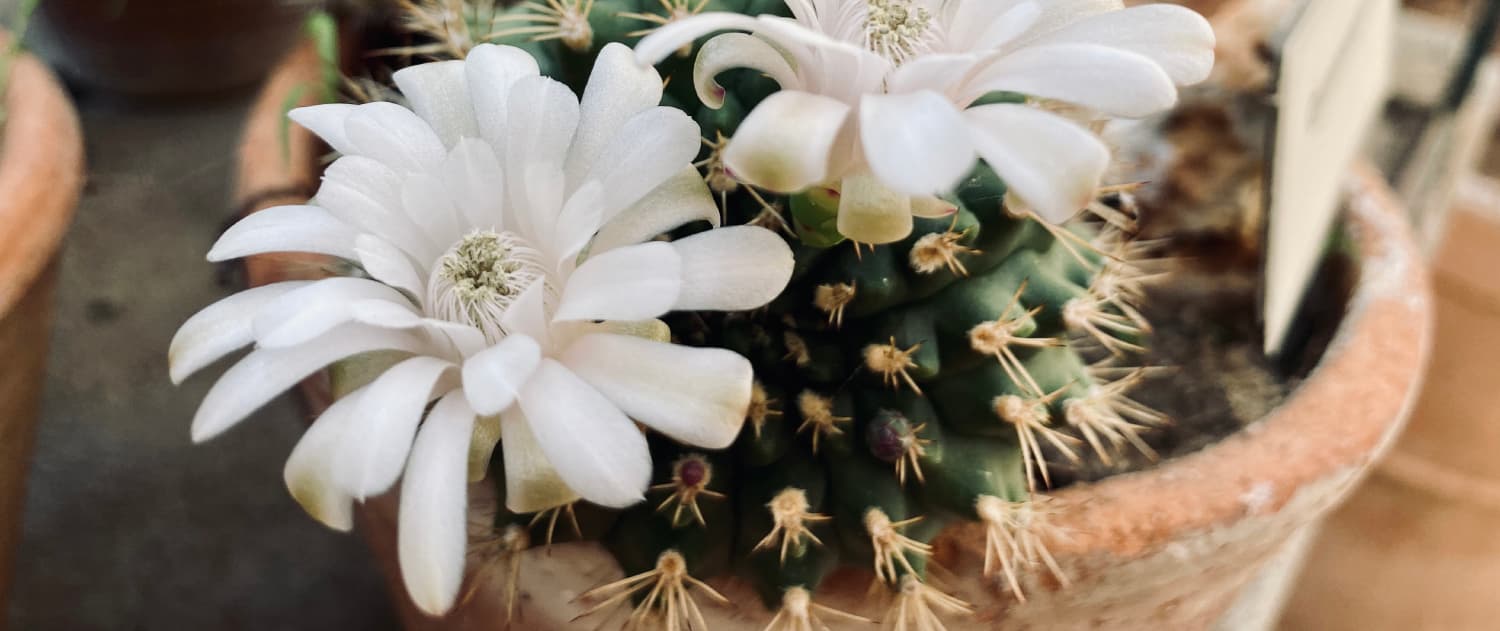Botanical Garden of Florence
Succulent plants
All collections
Introduction | Acquatic | Citrus fruits | Trees | Wild edible plants | Araceae family | Wild shrubs | Begonias | Bromeliads | Carnivorous | Cycads | Grasses | Medicinals | Tropical orchids | Palms | Pteridophytes | Roses | Serpentinophytes | Succulent plants | Exhibits
The collection includes more than 600 specimen belonging to 22 families, most of them grown in pots inside the Cold Greenhouse, where the plants are divided according to their geographical distribution and the family or genus to which they belong. This exhibit shows clearly the various adaptive strategies that species from very distant geographical areas have evolved in response to the same environmental stresses: leaves turned into thorns, succulent stems and leaves rich in tissues capable of storing water, but also leaves equipped with portions of transparent tissue that let the light filter down to the underground tissues where photosynthesis takes place.
Succulent plants, commonly known as succulents, are an extremely heterogeneous group of plants, but they all have in common the presence of organs equipped with aquiferous tissues (usually stems and leaves), that allow them to live in environments characterised by lack of water wide temperature ranges and high solar radiation.
The first verified record of the presence of succulent plants in the Botanical Garden of Florence dates back to 1890, when two specimen of Aloe striata, one of which is still living, were brought in from the Hanbury Garden of Mortola, near Ventimiglia. Until the middle of the 20th century, many plant exchanges with botanical gardens took place; later the collection was enriched with specimen collected in the wild during several missions to South America by Luciano Giugnolini, a member of the Garden’s staff. In the 1990s, the collection was further increased with approximately 550 new specimen from botanical gardens and private donations. Of particular importance was the implement of Cactaceae, with donations from the Tuscan section of the Italian Succulent Lovers Association, Lithops donated by the collector Giuseppe Piccione of S. Floriano (Verona) and 100 specimen from the Lodi collection of the Botanical Garden of Bologna.
The collection is used for the identification of species seized by the Forestry Corps within the framework of the CITES Convention, which protects plants and animals from illegal international trafficking. It is planned to increase the number of specimen in conservation, through new sowing and a new outdoor display for some of the more resistant species.

